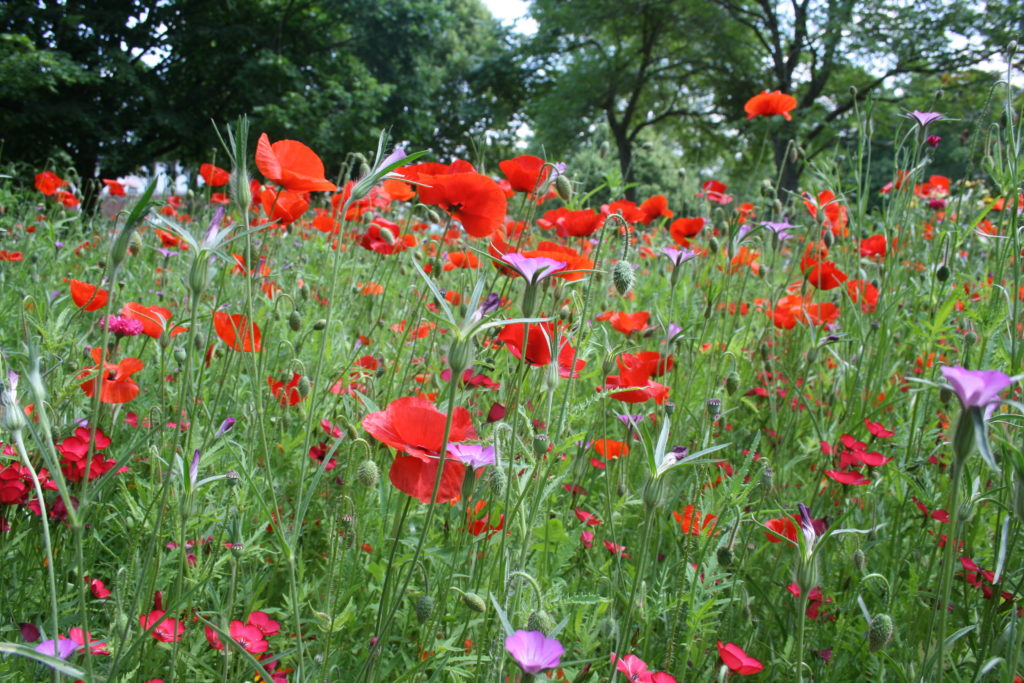Noticed a slightly “wilder” neighbourhood this summer? Yes, us too! The meadow revolution is here and it’s here to stay.
Council’s, churches, The National Trust…there is a long list of those on board. Our urban areas and countryside alike have benefitted from an increasing awareness as to the importance of letting areas be green and messy, with politely mown and manicured grass now considered to be very passé!
Fittingly, there is great diversity already in existence and lying dormant within our soils, particularly in London parks that have been protected from development for hundreds of years. Many seeds have been waiting underground for decades, and a poppy seed can survive for 70 years waiting to germinate!
Since May, London’s Southwark council has mowed a third less grass than it normally does, and the evolving wildflowers from seeds that had lain dormant in the earth have been allowed to grow and thrive.
Hitting the news this summer, even some Oxbridge colleges have got in on the act, turning their famous lawns into wildflower meadows.

For sites such as Peckham Rye Common, in London, the re-emergence of wildflowers also lends historical significance to the area. This year has seen Lady’s Bedstraw in abundance. In year’s gone by, this would have been used to stuff mattresses and pillows, while its yellow flowers coloured cheese and butter. Likewise, Red Campion was used as a remedy for snakebite, and Meadowsweet to treat a variety of illnesses from colds to joint disorders.
As well as a decreased carbon output (and budget savings) from reduced mowing, a more tolerant approach to wilder areas significantly benefits local biodiversity. Public opinion is shifting, with a greater understanding of the need to green our spaces and give back to nature.
British conservation charity, Plantlife, has been instrumental in encouraging both individuals and organisations to engage with their local habitat and save threatened wildflowers, plants and fungi. Since 2013, Plantlife has worked with partners to create 12,000 acres of wildflower meadows, with seven out of ten English councils reducing mowing as a means of boosting the natural habitat.
Likewise, in 2020, more than one-third of people decided not to mow their lawn in May compared with 15% in 2019, according to a Plantlife survey, with 30 councils also signed up to Plantlife’s ‘No-Mow-May’ initiative.
The times are most definitely a changin’ and the increased proliferation of flowers in cities and a “managed messiness” approach are here to stay.